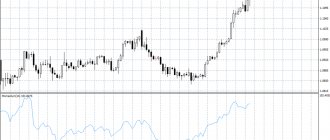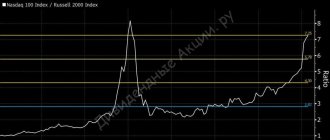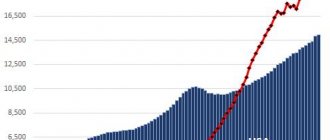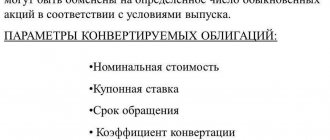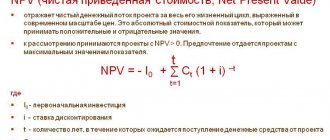olegas Mar 2, 2021 / 8628 Views
This is the simplest, but at the same time the most reliable type of investment, which can also bring good profitability. In order to engage in index investing, no special skills or talents are required; almost anyone can do this. After reading this article to the end, you will get into your hands one of the most powerful investment tools that can, at a minimum, ensure a comfortable old age, and, at a maximum, help achieve complete financial independence.
Index investing involves investing in stocks that underlie one of many stock indexes. Shares are purchased in the same proportion as they are included in the index and, thus, the value of the portfolio grows along with the increase in the value of the corresponding index.
I will say right away that this strategy belongs to the category of long-term, that is, the results of its work are fully manifested over a fairly long period of time, from several years to several decades. Therefore, if your plans do not include investing money for such long periods, then I’m afraid this strategy will not suit you.
But if you are planning your investments with an eye to the future within at least 5-10 years, then index investing may well form the basis of your investment strategy. But let's talk about everything in order and first define what such a concept as a stock index means.
Advantages and disadvantages
Convenience of investing is the main advantage of index funds. To create and manage a basket of securities from the S&P 500 list yourself, you need serious financial investments, a lot of effort and time for monitoring, and high commission costs.
All this can easily be replaced by a share of an index fund, which, in essence, is an ordinary security, an analogue of a stock, that can be bought and sold.
The disadvantages are the same as with conventional investments - the market does not provide guarantees of profitability. In any case, this is not a bank deposit, but a risky investment. By purchasing a share of an index fund, the investor begins to bear all market risks.
Which index ETF to choose: foreign or Russian
There are few Russian funds, but they are more affordable at the entry threshold. The big advantage of foreign ones is that they have a long history, you can check payments for a long time, a wide selection to suit every taste and pocket. But in general, the starting price for investing in foreign index funds is generally higher than in Russian ones.
If you are planning to invest $100,000 or more and you are not satisfied with the choice that the Russian market offers, try finding a fund through a foreign broker. Otherwise, the Russian market.
We increase profits
Sometimes the market gives us excellent opportunities to earn additional profit. Periodically, serious collapses in quotes occur on the stock exchange, when prices for everything fall by 10, 20 and 30%. There are even more serious declines, especially during crises. And at a time when most investors panic and start selling, this is an excellent opportunity for us to buy cheaper securities, in this case the index.
And the greater the fall, the higher the profit we will receive from further market growth in the future. And there will be growth. You have no doubt about it. It may take several years, but in the end you will benefit more than those who waited out the market recovery in money and started buying only when the market came out of the crisis, but 10-20% more expensive than you bought.
List of all Russian index funds (mutual funds and etfs)
Below is a table of all index Russian ETFs. Includes share price, daily change (08/23/19), ticker. Source - ru.investing.com.
One of the popular domestic instruments is index funds based on the Moscow Exchange index. According to the resource rostsber.ru, as of March 2021, shares of 10 such mutual funds are in circulation. The main indicator is the deviation of the mutual fund's profitability from the benchmark - the index itself, which has grown five times over this time. The smaller the deviation, the more effective the fund. The best indicators are at the management companies "Solid" and "Otkritie".
Following error
A secondary sign of the quality of index fund management can be considered the Tracking Error.
The following error is calculated as the standard deviation from the index values:
$$ TE = \sqrt {\frac{ \sum_{i=1}^{N} (R_f — R_i)^2}{N-1}} $$
Rf - fund return
Ri — index return
N - number of periods
The tracking error is important for those who are interested in the fund's technical characteristics (return, risk, correlation, etc.) being as close as possible to the index. This may be important, for example, when preparing an investment portfolio.
However, in our case, the Following Error can be used as an indirect sign of “chemistry” in the management of an index fund. If the asset composition differs significantly from the index, the error will be higher.
| Name | Following error 5 years | Following error 10 years |
| Alltek - Exchange stock index | 5,83% | 6,57% |
| Alfa-Capital Moscow Exchange Index | 3,50% | 6,14% |
| Solid - Moscow Exchange Index | 4,29% | 4,69% |
| Otkritie – Moscow Exchange Index | 3,19% | 4,19% |
| AK BARS Index | 3,90% | 4,15% |
| Raiffeisen – MICEX Blue Chip Index | 3,66% | 4,02% |
| BCS Moscow Exchange Index | 3,21% | 4,01% |
| Ingosstrakh Moscow Exchange Index | 3,16% | 3,94% |
| VTB — Moscow Exchange Index | 3,07% | 3,91% |
The table is sorted by the magnitude of the following error over a 10-year period. As you can see, the leaders in terms of error magnitude remain in both intervals. The lowest error is for VTB - Moscow Exchange Index and Ingosstrakh Moscow Exchange Index . The quality of VTB's index tracking confirms the attractiveness of this fund.
Conversely, the consistently high error of the Solid - Moscow Exchange Index confirms the assumption of using active management. Alpha's results are among the worst over a 10-year period, but have improved markedly over the last 5 years.
By the way, after several months of operation of the Sberbank BPIF, its error, normalized to annual values, is 0.07% ... there is something to think about.
How to invest money in a foreign index fund
There are various ways available to investors in Russia to purchase shares of foreign index funds. Depending on the status of the buyer - only Russian citizenship or dual citizenship, the planned amount of investment - the options described below are possible.
Foreign insurance company
First proposed by insurers in the UK. In fact, the insurance company acts as an ordinary licensed broker. The client takes out an insurance policy, and within its framework, an ETF is purchased.
Pros: protection of investor rights at the legislative level, elimination of double taxation (no tax is paid in the country of the insurer, no income declaration).
Cons: entry threshold (from $100 thousand), high commission fees.
Russian or foreign bank
A bank - Russian or foreign - can also act as an intermediary for purchasing in an index fund outside the Russian Federation.
In the case of a foreign bank, there are two options for a Russian:
- The first is to open an account outside the country and buy shares through a foreign bank at your own risk, especially if this bank is an investment bank. I will leave issues of risks associated with the work of the foreign bank itself and the receipt of income and payment of taxes outside the scope of this article.
- The second is to transfer money to an open account in a foreign bank through our banking system. According to Russian legislation (Chapter 15 of the Administrative Code), money from a citizen must be transferred through a Russian bank or its subsidiary.
With Russian banks everything is more complicated. Investments in foreign funds are usually associated with VIP treatment and are offered as part of service packages. For example, the Private Banking program from VTB. The minimum amount for participation is 50 million rubles. in Moscow, 30 million rubles. in the regions.
Directly through the management company
The most difficult path for a Russian investor. Especially recently against the backdrop of American sanctions. For example, contacting one of the largest players in this field - Fidelity - is completely useless: it only works with US residents. A simpler option seems to be to look for a European management company, but in any case, this is a difficult path for a Russian. Whether the game is worth the candle is a big question.
Through a broker
A Russian investor has three options for purchasing shares of a foreign index fund.
The first is directly on foreign exchanges through a Russian broker. The standard requirement for a client is to have the status of a qualified investor.
The second is through the subsidiaries of Russian brokers outside the Russian Federation (Finam, BCS, KIT Finance Europe). As a rule, these are companies registered offshore.
The third is through foreign brokers, having concluded an appropriate service agreement with them. It should be kept in mind that not every foreign broker works with foreigners, including Russians. The reasons range from political relations between countries to domestic legislation and internal rules of brokers that clearly regulate risks.
As an example, the table shows a list of the 5 best foreign online brokers, according to the American portal Investopedia.com, for August 2021. The choice was made from a list of 70 brokers.
| №pp | Broker | Minimum trading deposit, $ | Fees, $ | Notes |
| 1 | Fidelity Investments | 0 | 4.95 per share, ETF | Works only with US residents |
| 2 | Interactive Brokers | 0 | 0.005/share | Work in Russia |
| 3 | Charles Schwab | 0 | 4.95 per share, ETF | Increased margin requirements |
| 4 | Trade Station | 500 | 5 per share, ETF | No Forex |
| 5 | TD Ameritrade | 0 | 6,95 | High commission |
How to invest in a Russian index fund
The purchasing process is simple. Choose an investment path - contact a broker or management company. Often both statuses are combined.
mutual fund
A mutual fund is a more conservative collective investment instrument compared to an ETF. As a rule, with higher commissions and by default does not provide for free circulation on the exchange. According to the form of attachments - open, closed, interval. Initially focused on a higher level of entry in terms of money relative to ETFs.
ETF
The shortest way to purchase shares is to contact the management company of the index funds that interest you directly. If you are interested in the VTB American Companies Stock Fund (VTBA ETF) (benchmark - the S&P 500 index) and do not yet have a brokerage account, open it with VTB itself and buy it on your account. The cost of a VTBA ETF share as of August 22, 2021 was 673 rubles.
Or contact the FinEx group of companies, which manages a family of ETF funds in Russia - 14 pieces. Including FinEx USA UCITS (ticker FXUS) - index fund, base - index of American companies Solactive GBS United States Large&Mid CapIndex NTR. The portfolio contains more than 600 US stocks.
What are exchange (stock) indices
You can learn more about this concept by following the link: Stock indices. Here we will consider it only in general terms, only to the extent necessary to understand the topic of this article.
At its core, a stock index is a certain numerical indicator calculated based on the value of a certain set of shares of various companies. The set of shares that make up the index, as well as the shares of each of them, is determined by the exchange platform on which this index was created. Therefore, indices, as a rule, include shares of only fairly large and reliable companies.
Initially, stock indices were created for certain industries. For example, one of the first - the Dow Jones index was of two types:
- Industrial (Dow Jones Industrial Average). It was calculated based on the value of shares of the thirty largest industrial companies in the United States.
- Transport (Dow Jones Transportation Average). Calculated based on the shares of the eleven largest American transport companies of that time.
The main feature of stock indices is that they reflect the development of the economy as a whole. They are compiled and balanced in such a way as to accurately convey the state of affairs in entire industries and (or) segments of the economy. This is the main feature on which index investing is based. After all, the shares of one or several companies can either rise or fall in price, but the entire economy as a whole is always in a state of growth (of course, various kinds of recessions and crises occur, but they are inevitably followed by growth again). Just take a look at the graphs below and you will understand everything.
As you can see, at its core, a stock index is a well-balanced and differentiated portfolio of shares compiled by professionals.
By copying your stock portfolio from a stock index, i.e. by composing it from shares of the same companies and in the same proportions, you thereby create a portfolio, the value of which will grow along with the growth of the selected index.
